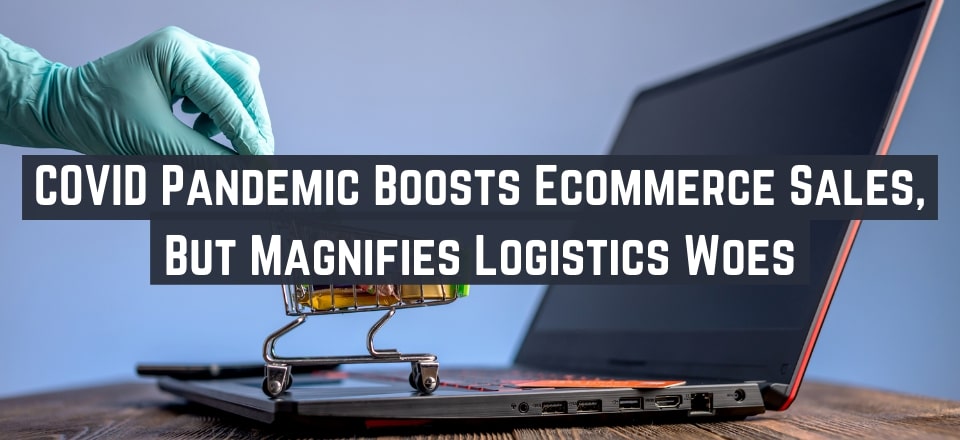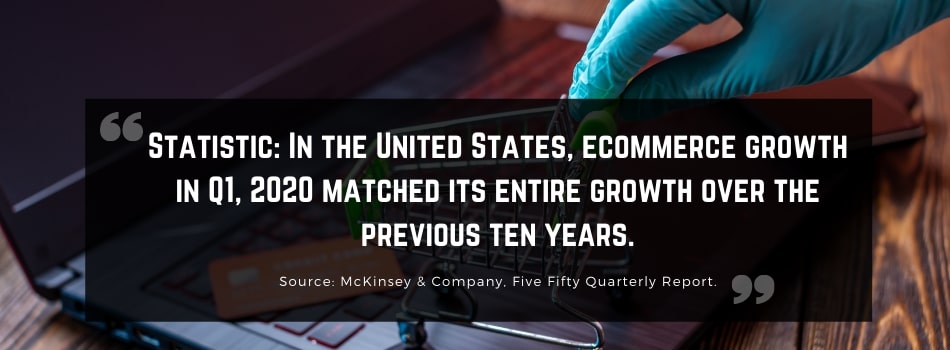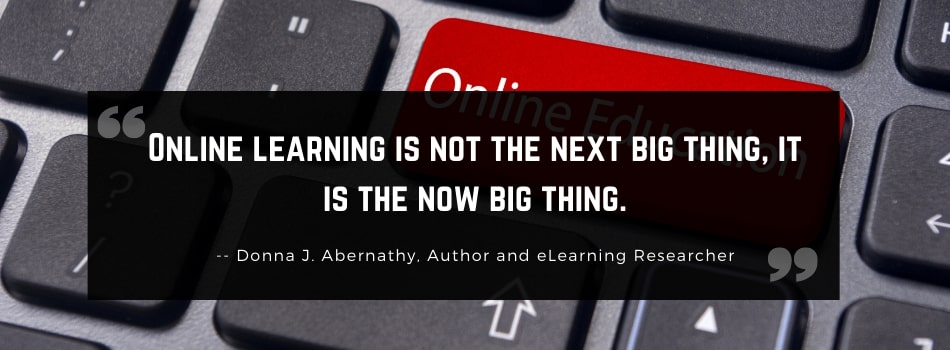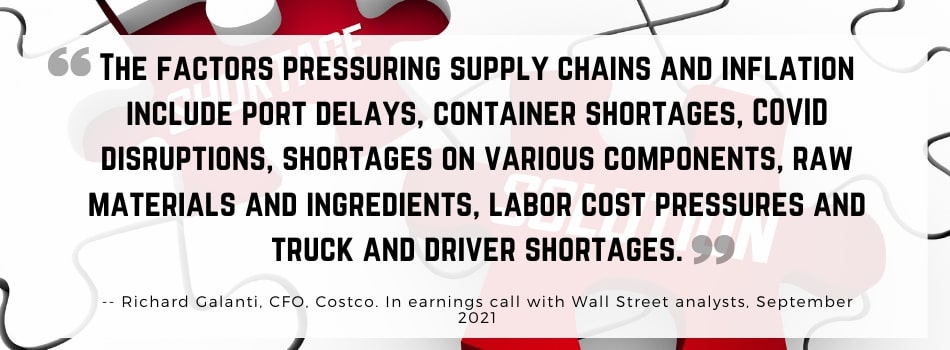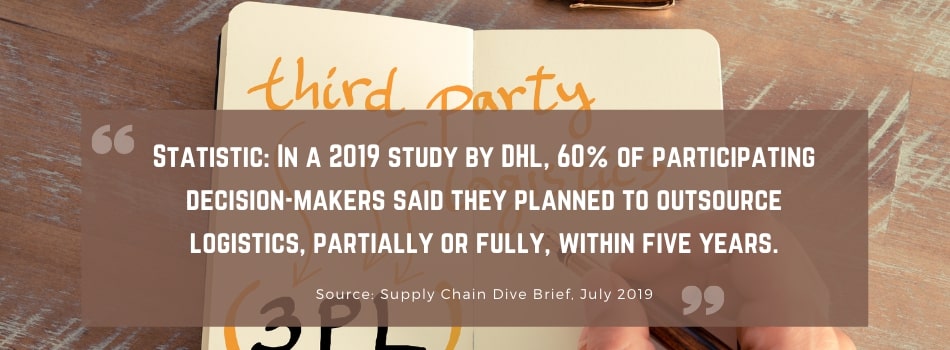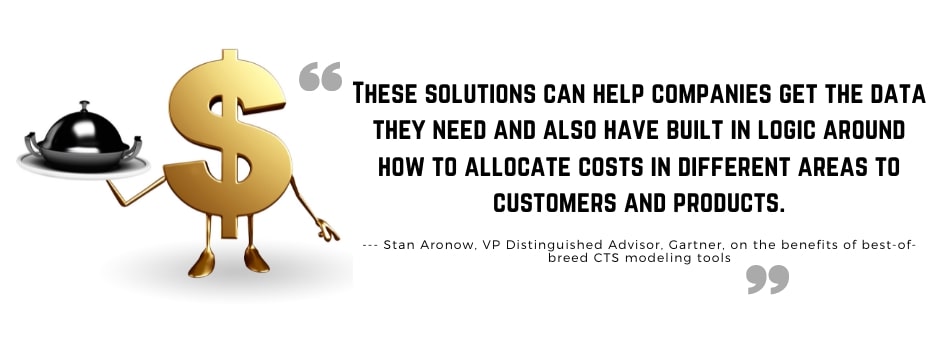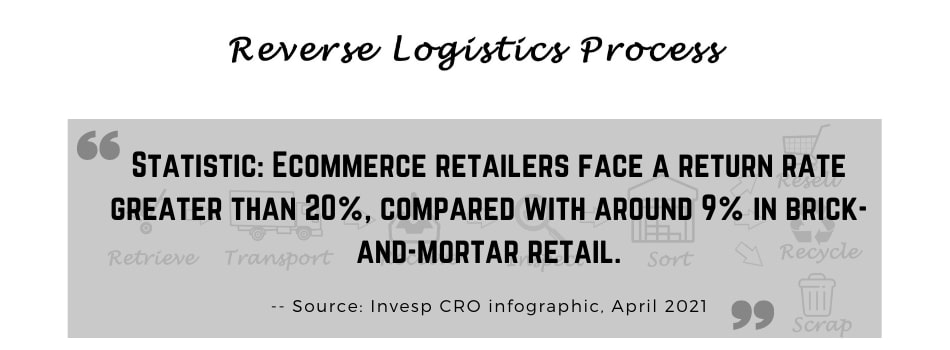Is your ecommerce business one of those that’s been growing steadily in recent years, and seen an absolute boom since the COVID-19 pandemic emerged?
If so, your enterprise’s good fortunes are probably tempered by the challenges of meeting unprecedented demand for your wares.
While the pandemic has helped ecommerce companies increase sales immeasurably, it has, at the same time, disrupted the global supply chains that so many retailers rely on and, by accelerating ecommerce sales growth so quickly, placed immense pressure on distribution networks.
So what do you need to do to prevent high demand from being a double-edged sword and potentially stymieing your ability to compete in the lucrative, but fierce ecommerce marketplace?
The first steps, of course, are to understand the challenges you face, prioritise them for action, and consider the resources and help you need to meet and overcome them. So to assist you with the very first step, let’s look at what are most likely to be your concerns.
Supply Chain and Logistics Knowledge
Perhaps your company, like many startups in the ecommerce sphere, has a core team of business-savvy professionals but is not brimming with supply chain specialists. Instead, you might have spent three or four years relying on research and expert advice to keep your supply chain running as smoothly as possible.
That’s not to say that’s a poor approach to supply chain management, especially during reasonably stable times. However, in the wake of the pandemic, with ecommerce demand ballooning as it is, an injection of supply chain and logistics knowledge can generate a much-needed marketplace advantage.
Where to Access the Knowledge You Need
There are, of course, several ways to achieve a logistics knowledge infusion. One is to recruit a logistics specialist or two, or perhaps an entire team, but that can be costly. Another is to invest in some supply chain and logistics training for some of your existing staff.
With training and education now joining most other industries in the occupation of digital-business realms, you should find it possible to raise the level of supply chain knowledge in your organisation without spending inordinate sums of money.
Online supply chain and logistics education programs cost a fraction of the fees for traditional courses, and much of the study can be done outside of working hours.
There’s also the short-term option of engaging supply chain consultants to help you when specialist knowledge is required. In reality, though, the more your business scales, the more often you’re likely to need those logistics skills, so expending some financial resources on internal supply chain training and development can often be the most cost-effective option.
Product Availability
While it’s fantastic to experience substantial demand for your products, current supply chain issues caused by the pandemic can make it hard to maintain availability. And the longer your supply chain, the more difficult it can be to ensure an adequate flow of products and—if you manufacture for the ecommerce market—materials.
Is your enterprise a pure-play ecommerce retailer? If it is, you may have some advantage over brick-and-mortar or hybrid competitors in your ability to create flash campaigns and promotions to clear stock surpluses. That benefit could allow you to carry some extra inventory without risking heavy losses through obsolescence.
But shortages are anathema, because it’s too easy for your customers to buy from competitors if you can’t fulfil their needs—and once customers defect, you might never get them back.
Raw materials, ingredients and components, and packaging materials can sometimes be challenging to obtain, and production or shipping delays are currently commonplace.
As a result, your business might be suffering from long periods in which specific products are out of stock, or perhaps you are offering preorder discounts to your customers to combat the situation. In either case, you’re losing revenue as a result of stock availability issues.
How to Improve Product Availability
Solving availability problems may not be easy, but you probably have some options available if you know how to exploit them. For example, you might:
- Diversify your supply base, so you’re not too reliant on a single source
- Optimise supply routes, logistics partnerships, and transportation modes to speed up supply
- Switch to alternative packaging materials if you can identify some that are easier to obtain
- Placing production orders a long time in advance of when the products are needed
- Shorten your supply chain by sourcing products closer to home, or closer to your customer communities
The tricky part is knowing which, if any of the above measures would make sense for your business. If you get it wrong, you could end up investing substantial money and resources for minimal gain.
So again, if you haven’t hired or trained some serious supply chain expertise into your enterprise workforce, it may be worth seeking an independent audit or review of your inbound supply chain. That would help you get an objective view and some direction for your efforts to improve product availability.
3PL Decision-Making
What’s the right balance of in-house and outsourced logistics? It can be a difficult question to answer. You might have found that in scaling up so quickly for increased demand, your warehouse capacity is no longer sufficient for the volume of goods you’re handling.
Or maybe you have already outsourced your warehousing, and your 3PL partner was a good match when your business was smaller, but is now struggling with your higher volumes. You might be wondering if you should switch some or all of your operations from outsourced to in-house, or vice-versa.
In any event, these sorts of decisions about logistics sourcing always involve considerable expenditure, and can’t be taken lightly. It’s not only about whether to insource or outsource, but also about selecting the right 3PL partner if you choose to contract your logistics out.
Your expansion needs, particularly if they extend to cross-border or overseas markets, might dictate that you work with multiple 3PLs, markedly increasing the effort involved in decision-making and partner selection.
A misguided choice of partner can create problems for your business for several years, as can an inappropriate balance of in-house and outsourced operations—or working with too many (or too few) providers.
Avoid the Typical Outsourcing Mistakes
In our work with companies worldwide, we frequently find that problems with outsourcing contracts are as much the client’s fault as the contractor’s, and in some cases, more so.
A well-balanced 3PL relationship, in which the client and the contractor enjoy mutually satisfying benefits, can be surprisingly tricky to achieve.
Typical mistakes made by clients include:
- Trying to implement outsourcing projects too quickly
- Failing to ensure that exit clauses and similar safeguards are written into contracts
- Allowing objectivity to lapse during provider shortlisting and selection
- Neglecting to actively manage the relationship and communicate effectively with the 3PL partner
To avoid making the mistakes listed above, and similar, it will always help to have some experts on your side who regularly engage in outsourcing projects and 3PL contract negotiations.
For example, at Logistics Bureau, our consultants have extensive experience setting up 3PL contracts and providing guidance to clients during implementation, reducing the potential for relationship breakdowns further down the line.
Effective Demand, Supply, and Inventory Planning
For a fledgling ecommerce business, rudimentary forecasting and planning methods can be sufficient to guide tactics and ensure supply and demand are balanced.
Of course, as an enterprise grows, it becomes harder to coordinate all the moving parts. Nevertheless, in a period like the business world has experienced over the last couple of years involving dramatic increases in ecommerce sales volume, it’s understandable if you haven’t stopped to think about upgrading planning principles and methods. If that’s the case, now might be the time to do so.
For example, have you been using Excel spreadsheets or similar for your planning and forecasting?
And in doing so, have you fallen victim to formula problems or input errors?
Perhaps you’ve managed to avoid such issues, but the more your business grows, the more likely it is that you will suffer them at some point.
Don’t Be Complacent About Planning: There’s Always Room to Improve
As a company that operates 100% online, there’s no possibility that you and your team are strangers to the latest in business IT solutions. So why not ditch the spreadsheets and bring those planning and forecasting tools up to the same degree of robustness as, say, your cloud-based ERP solution?
Perhaps the reason for not doing so is that you believe your planning processes are solid. But even if you hold that conviction, are you 100% confident that your reasoning is unbiased?
A full audit of your planning processes and tools, executed by an impartial team of supply chain experts, could be well worthwhile.
It could confirm that confidence in your planning performance is justified, or otherwise, help you identify weaknesses and implement the right solutions. After all, inadequate planning and forecasting can be severely detrimental to customer service and inventory management.
Right-Sizing Safety Stock
Supply chain inventory management has arrived at a crossroads. After many years of favour for lean supply chains and just-in-time logistics, too many companies found themselves caught out when the pandemic struck.
With general, buffer, and safety inventory levels cut to the quick, the sudden shutdown of Chinese manufacturing, followed by a chaotic meltdown of shipping container management and slashed air freight capacity, left many with horrific stock shortages.
COVID-19 exposed the risks of lean supply chain management, with businesses rudely awakened to the brittleness of their networks, and some failing to recover after the disruption.
Is your enterprise is one of those that survived or even thrived, as many ecommerce companies did? Then you will understandably be looking at ways to protect your supply chain from future black swan events, probably including a reassessment of safety stock levels.
Don’t Rely on Rules of Thumb
Even before COVID, determining appropriate safety stock levels was a challenge for ecommerce startups. The balance is a fine one, with too little safety inventory placing your business at risk of stockouts in the event of supply disruptions or unplanned sales peaks.
On the other hand, too much safety stock ties up working capital unnecessarily. When either of these undesirable situations arises, it’s commonly due to applying a general “rule of thumb” approach to determining safety stock requirements. All too often, the result is safety stock levels that are either excessive or insufficient.
The one advantage you have in planning safety stock levels to protect your business from future shocks, is that you have just been through a (hopefully) once-in-a-lifetime event, and weathered it.
With that experience, it would be rather narrow-minded to look only at safety stock from the perspective of how much you will need to buffer against variability. So, in addition, it will be prudent to look at how you might reduce that variability.
In our experience, attention to reductions in supply and demand variability can deliver savings of 5% or perhaps more in safety inventory holdings. So if you have the expertise and resources to analyse variability and identify reduction opportunities, or are prepared to engage some external help to do that, now is a great time to go for it.
Understanding Cost to Serve
If you’re running a pure-play ecommerce business, with no physical stores at which your customers can shop, cost-to-serve is a critical profitability factor for your company. In online retail, the cost-to-serve (CTS) associated with customers and product lines can vary considerably.
For example, if you sell internationally, the cost of serving your domestic customers will differ from those overseas. Even within one country, the cost to serve customers in one region might be more or less than in others.
Of course, one of the primary reasons for such variability is the extra logistics involved in getting your customers’ purchases into their hands.
The situation becomes even more complicated if you provide free shipping in some scenarios and charge for shipping in others. Every such option will either add or reduce your cost to serve. The trick is to know what the CTS is for each different combination of product, shipping channel, and customer.
The analysis might not be simple to perform, but it will probably be eye-opening and reveal opportunities to make significant savings and, in turn, generate higher profitability.
CTS Analysis Options
There are several ways to approach a cost-to-serve analysis, all requiring some form of digital solution. It can, of course, be done using a spreadsheet solution. However, with ecommerce typically involving various routes to market, a high number of SKUs, and customers spread across a range of locations, the task will be much easier if you invest in specialised analytics software.
An alternative is to engage a consulting firm that can provide both the technological solution and the data scientists to analyse your CTS thoroughly and present the results concisely.
Your team can then focus on the products, customers, and processes with the higher costs to serve, determining solutions to bring those costs down and improve your sales margins.
Managing Reverse Logistics
Whether you consider it a blight upon your business or an opportunity to delight your customers, the one thing you can always be sure of in an ecommerce retail setting is a high volume of product returns.
From buyer’s regret and the fickle nature of consumers to deliberate bracketing and showrooming behaviour, not to mention returns arising from picking errors or other operational issues, online shoppers return products at a rate far higher than traditional retailers must endure.
But of course, you already know all this, so how well are you managing the influx of returned products? Do you believe your enterprise has a well-managed and efficient reverse logistics operation and that your customer returns flow is streamlined?
If true, you’re probably a country mile ahead of your competitors. That’s because most online retailers have not reached a high level of maturity in their reverse logistics processes, and hence it’s something we often get called on to help our clients fix.
The Two Tracks of Returns Management
Returns are an issue best tackled on two fronts, those being prevention and management. To begin with, you need to determine whether your policy will be liberal, with returns permitted under most circumstances and included as a feature of your customer experience program, or whether to discourage returns.
Returns as a Value Proposition
If you opt for the liberal approach, your goal should be to make the customers’ returns experience as effortless as possible. To do so, you might want to consider working with one of the growing numbers of 3PLs specialising in ecommerce returns management.
Such a provider may be capable of processing and executing your returns at a lower cost than other 3PLs. Of course, you will pay the provider a premium for the service, but if you expect to handle many returns, it could still prove the most economical approach. Additionally, a reverse logistics partner’s specialised processes and dedicated resources will benefit your business and customers.
What if You Want to Minimise Returns?
If you choose to discourage returns, you’ll need to develop a policy that supports that decision without alienating your customers. Naturally, you will need to allow them to return products under specific conditions, so you should still ensure that the process for sending items back is as simple and streamlined as possible for shoppers using your online store or outlet. Here too, a specialist partner might be a suitable solution if you expect high returns volumes.
Along with your returns policy, other initiatives to minimise returns include clear and detailed product descriptions on your store’s website and comprehensive after-sales customer and technical support.
Your returns-management strategy should complement and support your policy. If you partner with specialists, they will handle much of the management activity for you.
However, you might not find such a provider (or providers) to cover all the geographies where you sell your products. Therefore, you’ll need to develop your entire reverse logistics network to integrate as seamlessly as possible with your inventory management, procurement, outbound logistics, and customer service functions.
Of course, you will probably need to do the same if you work with specialist returns partners, but the process will tend to be less complicated—and some providers will manage the entire return supply chain from end to end.
Supply Chain Excellence: The Next Level of Ecommerce Prowess
Few ecommerce leaders would complain about the five years’ worth of business growth that COVID-19 has consolidated into around a year and a half. However, many have not yet developed their supply chain operations at a pace that enables them to keep up with exploding sales volume.
In the fiercely competitive world of online retail, the supply chain will be the next big battleground, and the rules will not be the same as they were pre-2020.
The earlier you can start getting a handle on ecommerce supply chain issues like those outlined here, the greater the competitive advantage for your enterprise.
At Logistics Bureau, we help traditional retail and ecommerce enterprises solve problems like these.
We even offer a range of remotely executed diagnostic and analytics services to help you fast-track your progress.
You can take advantage of them wherever your business is located, and they cover critical supply chain elements such as cost-to-serve, planning, forecasting, inventory management, and distribution network optimisation.
To find out more, or to discuss your ecommerce logistics and supply chain pain points with an expert logistician, and see how we can help you, contact us right away.
We can email some information to you, or better still, book you in for a FREE initial discovery call on Zoom—at a day and time that works for you.
Editor’s Note: This post was originally published on October 12, 2021, under the title “Post-COVID Ecommerce is Booming, But Logistics Issues Abound” on Logistics Bureau’s website.
